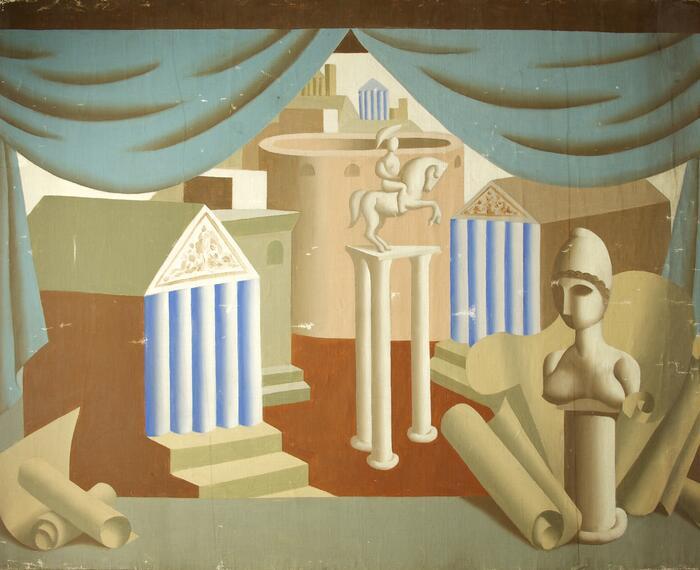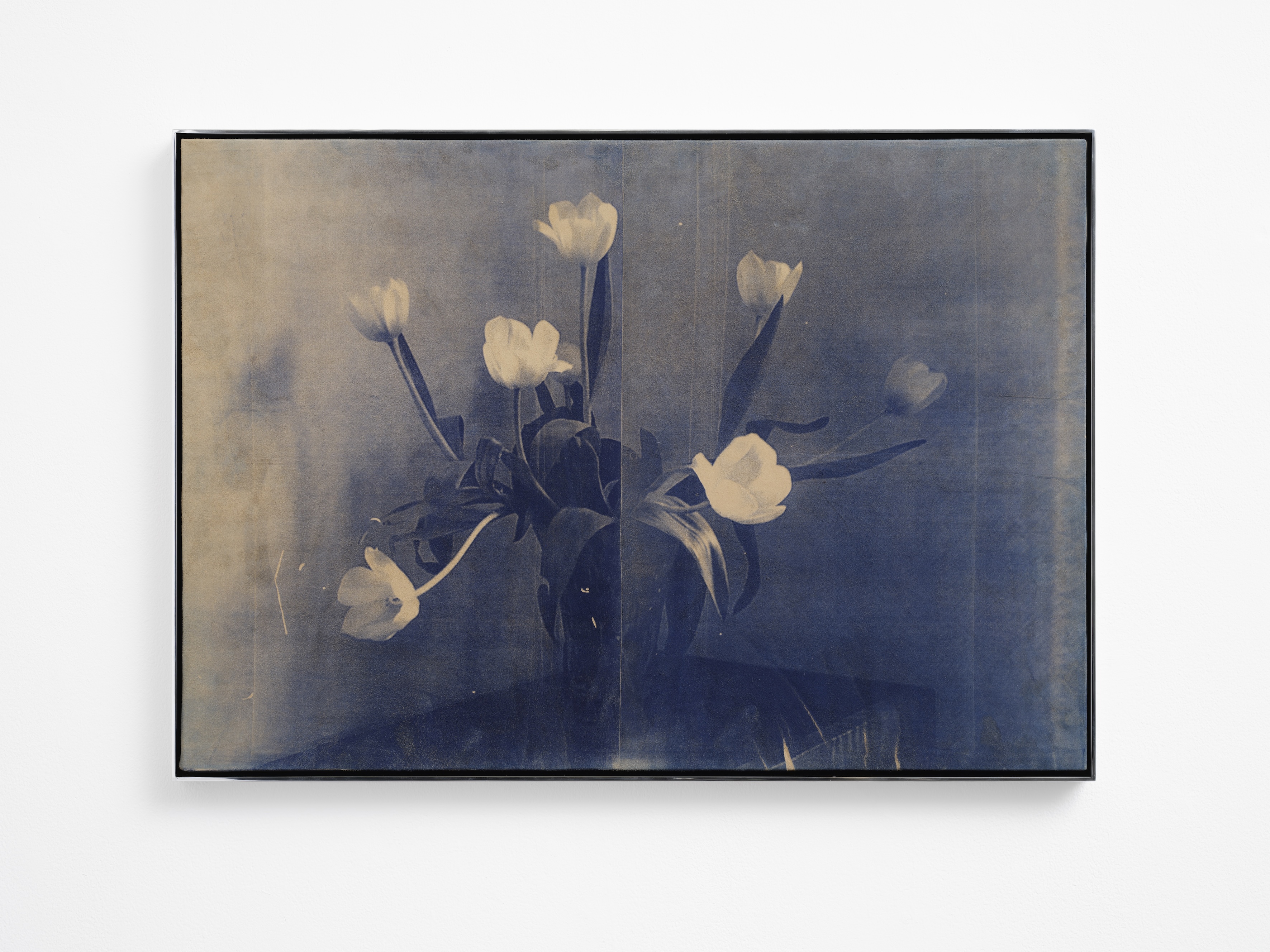


Poppy Jones, 'White Tulips (Tuesday)', 2024, oil and watercolour on suede, soldered aluminium frame, courtesy the artist and Herald St. Photo by Jackson White
Herald St, 2 Herald St, London, E2 6JT and Museum St, 43 Museum St, London, WC1A 1LY
5th March – 13th April 2024
Poppy Jones debuts with Herald St showing nineteen works across the gallery’s two spaces, in the East End and in Bloomsbury. Today’s Dispatch is by way of a “last chance to see” since both displays close tomorrow.
The exhibition title Solid Objects is taken from a short story of the same name, written in 1920 by Virginia Woolf, in which a young man’s promising career as a politician is abandoned as he pursues an obsessive passion for collecting discarded objects.
'Looked at again and again half consciously by a mind thinking of something else, any object mixes itself so profoundly with the stuff of thought that it loses its actual form and recomposes itself a little differently in an ideal shape which haunts the brain when we least expect it.' – Virginia Woolf, Solid Objects, 1920.
Jones has long described her own works as objects. Although they might at first glance appear to be paintings, these are far more complex in their physical composition. Each work begins as a photograph, taken by the artist, which may subsequently be digitally altered before being printed onto found fabric or suede. After printing her image, the artist then works into them with watercolour. The fact that the supports for the image have all had a previous life of their own in the world underscores the object quality of each piece, emphasised again by the fact that the soldered aluminium frame is always listed with the media. By subjecting the image to these successive processes, Jones shifts the operation of the work from a documentary function towards an autonomous agency of its own.
Sitting within a tradition of still life, the works single out modest domestic objects for intense scrutiny, giving life not only to the objects themselves but the atmospheres of silence and stillness of their settings. The small scale of the works, rendering their subjects at 1:1 scale, demands a particular kind of looking. They require us to step closer, shutting out peripheral distractions, to peer in. A single brown egg on a saucer has the poise of a Euan Uglow; there is a breathlessness in its stasis; in so spare a composition the play of shadows itself becomes a protagonist. The close tones of greys and creams here, or in a plate of cherry tomatoes, inevitably bring to mind the metaphysical still lifes of Giorgio Morandi. The graphic clarity of a single flower in a vase in Spring Dusk, 2023, recalls Andre Kertesz’ famous photograph of Piet Mondrian’s ascetic studio.
While international art historical references hover around many of the works, there is much to tether the show to the artist’s Sussex home – Charleston Farmhouse, home to members of the Bloomsbury group, and to West Dean College, former home of Edward James, the great patron of the Surrealists, where Jones had a residency in 2015. Solid Objects, 2023 is based on an image from Charleston: a decanter and glass sit on an Omega Workshops tablecloth, drained of the jolly colour palette we normally associate with it, the composition takes on a brooding quality, almost out of time. White Tulips (Tuesday) and White Tulips (Friday), both 2024, revisit the same vase of flowers across a few days: the passage of time is recorded in their elegant slouching. Both images are destabilised by the not-quite register of the two halves of the print. The suede support bears finger marks, and in the Friday version, stretched out creases that have taken no pigment and reveal the raw material – pulling the viewer up to the surface of the work. Jones is interested in the flaws and glitches in both analogue and digital media – the scratches and dust on celluloid, the pixellation of digital images.
The intimiste tone continues with works that focus on clothing. As Wolfgang Tillmans has demonstrated so powerfully, discarded garments can vividly evoke the absent body that warmed and rumpled them. Gold Shirt 2023, is made on fragments of the shirt that it depicts whilst Torso 2023 is made from antique cotton. As such, these works become memento mori; Cool of the Day does this almost more vividly, with its depiction of the mid-section of a puffa jacket – somehow melancholically deflated. Made from the second hand silk of a shirt, the section of stitched strap in the top left of the work once again creates a disruption with subtle surface incident.
Poppy Jones’ technically intriguing works tackle issues of representation in the digital age while operating with a poetic or literary sensibility that is somehow quintessentially English – they are both emphatically of now, and redolent of a near past. Highly recommended.
Caroline Douglas
Director
Poppy Jones, Solid Objects at Herald St is open until Saturday 13th April
Herald St
2 Herald St
London, E2 6JT
Museum St
43 Museum St
London, WC1A 1LY
Gallery opening hours: 11am to 6pm, Tuesday to Saturday.